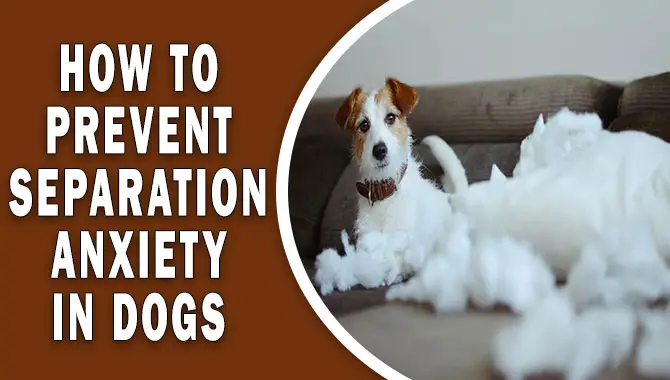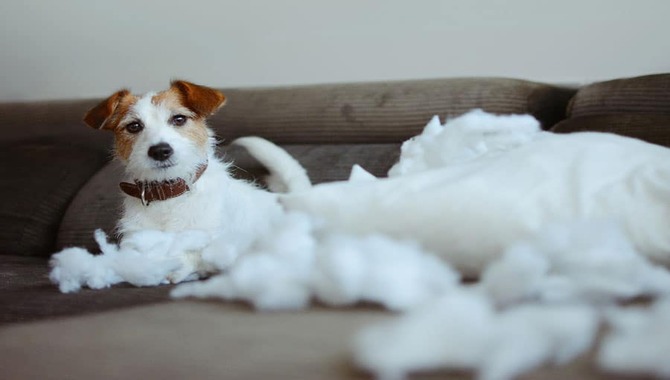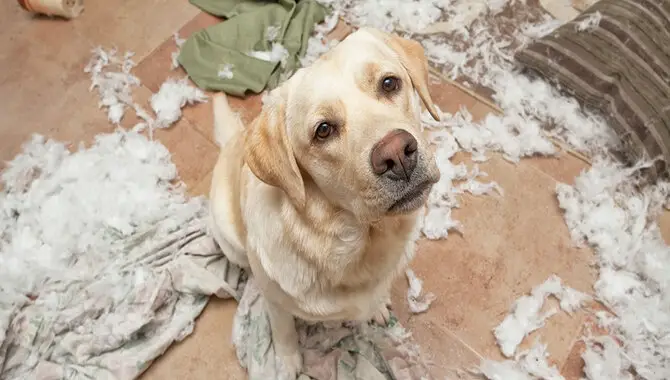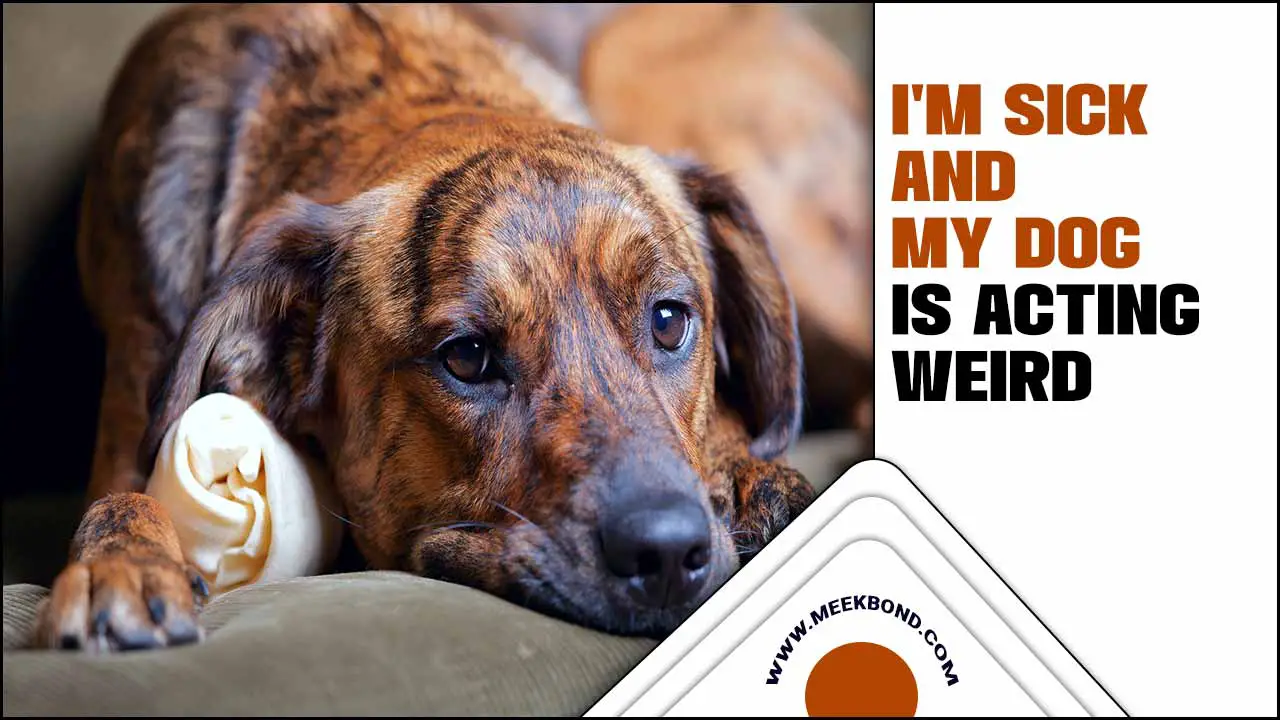If your dog is experiencing separation anxiety, there are several things you can do to help prevent it. First, ensure you provide plenty of exercise and mental stimulation for your dog throughout the day.
This will help tire them out and reduce their anxiety. Secondly, create a safe and comfortable space for your dog while you’re away. This could be a crate or a designated area in your home with their bed and some toys. Finally, leave your dog with a positive association by giving them a treat or toy before you leave.

What Are Some Things You Can Do To Prevent Separation Anxiety In Dogs?

Dogs are social animals and thrive on companionship. When they’ve left alone, they can become anxious and stressed. This can lead to destructive behaviors, like chewing and barking. Separation anxiety is a real problem for many dogs, but there are things you can do to help prevent it.
Here Are Some Tips
1. Start with baby steps. If you’re gone for long periods, start by leaving your dog for short periods. Gradually increase the amount of time you’re gone.
2. Don’t make a big deal out of coming and going. When you leave, don’t give your dog a lot of attention. This will make them more anxious. And when you come home, don’t make a big fuss. Ignore your dog for a few minutes, then calmly pet them.
3. Give your dog something to do. Boredom can contribute to separation anxiety. Make sure your dog has plenty of toys and bones to chew on. A Kong toy filled with peanut butter is a great option. You can also give your dog a puzzle toy, like a Buster Cube.
4. Exercise your dog. A tired dog is a happy dog. Make sure you’re giving your dog enough exercise. A long walk or run is a great way to tire them out.
5. Create a safe space. Choose an area in your home where your dog can relax. This could be their crate or a special spot on their bed. Put their favorite toy in this space and make sure it’s comfortable.
Separation anxiety is a real problem for many dogs, but there are things you can do to help prevent it. Following these tips can help your dog feel more comfortable when you’re away from home.
What Are Some Common Signs Of Separation Anxiety In Dogs?
If your dog is exhibiting any of the following behaviors, they may be experiencing separation anxiety:
- Excessive vocalization (barking, whining, howling) when you leave them alone
- Destructive behaviors (chewing, digging, scratching) when left alone
- Escape behaviors (jumping fences, digging holes under fences, chewing through doors or window screens)
- Excessive clinginess and separation-related anxiety when you are home
- Pacing, shaking, drooling or other signs of distress when you leave them alone
If your dog is experiencing separation anxiety, there are a few things you can do to help them feel more comfortable when you’re away from home:
- Make sure they have plenty of exercise before you leave so they’re tired and less likely to be anxious.
- Leave them with a special toy or treat they only get when you’re gone to help them associate your departure with something positive.
- Crate train your dog if they’re not already crate trained. This can give them a sense of security when left alone.
- Gradually increase the time you’re away from home, starting with just a few minutes. This will help them get used to being alone and help reduce their anxiety.
If you think your dog may be experiencing separation anxiety, talk to your veterinarian about how to help them.
What Are Some Of The Best Ways To Help A Dog With Separation Anxiety?

If so, you’re not alone. Many dog owners have to deal with separation anxiety at some point. The good news is that you can do several things to ease your dog’s anxiety and help them enjoy being alone.
Here Are a Few Tips:
- Make sure your dog has plenty of exercises. A tired dog is a happy dog. If your dog has a lot of energy, they’re more likely to get anxious when left alone. Please give them a good walk or run before you leave so they’re nice and tired when you go.
- Leave them with some toys. A Kong toy filled with treats is a great way to keep your dog occupied. They’ll have to work to get the treats out, which will keep their mind occupied and help them relax.
- Make sure your departures are calm. If you get anxious when you leave your dog alone, they’ll pick up on that, worsening their anxiety. So, try to stay calm when you’re getting ready to leave.
- Don’t make a big deal out of coming and going. When you leave, don’t say goodbye or make a big fuss. And when you come home, don’t greet your dog too excitedly. Just act like it’s no big deal.
- Consider getting another dog. If your dog is struggling with being alone, getting another dog can help. They’ll have someone to keep them company, which can make a big difference.
If you follow these tips, you should see a big difference in your dog’s anxiety. Just remember to be patient and give them time to adjust.
What Should You Do If You Think Your Dog May Be Suffering From Separation Anxiety?
If your dog is experiencing separation anxiety, there are a few things you can do to help. First, create a calming environment for your dog when you leave. This may include leaving some music on or providing a favorite toy. Secondly, ensure you have a routine when you leave so your dog knows what to expect.
Finally, do not make a big deal out of coming and going. This will only heighten your dog’s anxiety. Talk to your veterinarian if you think your dog may suffer from separation anxiety. They can help you create a plan to help your dog feel more comfortable when you’re away.
Conclusion
There is no one-size-fits-all answer to this question. The best way to prevent separation anxiety in dogs may vary depending on the individual dog’s temperament and behavior. However, some tips on preventing separation anxiety in dogs may include providing plenty of exercises and mental stimulation before leaving them alone and creating a safe and comfortable space for them to stay in while you are gone.

Aquarium passion is all about connecting with the aquatic life and providing education to the public on the importance of these creatures. We showcase a wide variety of marine life through our exhibits as well as working with schools to provide unique learning opportunities for students of all ages.








